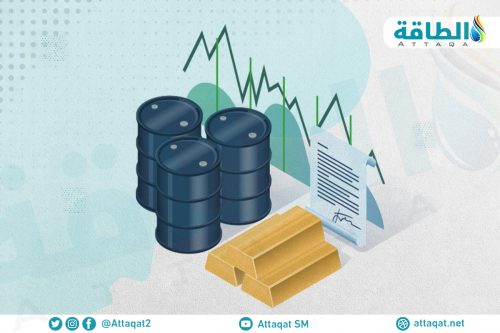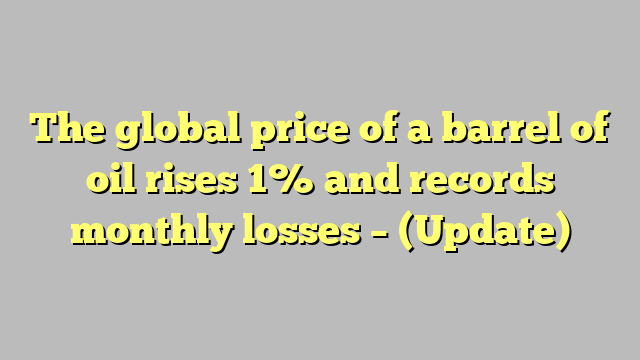The price of a barrel of oil rose globally by more than 1% at the end of trading today, Tuesday, January 31, amid anticipation of the position of central banks regarding raising interest rates, but it recorded monthly losses.
This comes with expectations of a recovery in demand from China and despite fears of further increases in interest rates and large inflows of Russian crude oil.
The global price of a barrel of oil today
At the end of trading, the futures prices for Brent crude, the benchmark for delivery in March 2023, decreased by 0.5%, to reach $ 84.49 a barrel.
While the price of the most active Brent crude futures contract – April 2023 delivery – rose by 1.1%, to reach $85.46 a barrel.
The price of US West Texas crude futures – delivery in March 2023 – increased by 1.3%, to $ 78.87 a barrel, according to data viewed by the specialized energy platform.
Oil prices ended their trading yesterday, Monday, January 30, down by more than 2%, after a volatile session.
During January 2023, both crudes (Brent and West Texas Intermediate) recorded monthly losses of about 1.6% and 1.7%, respectively.
Oil market conditions
“Oil markets are facing downward pressure, as risk offs predominate ahead of the Fed meeting, along with a rally in the US dollar,” said CMC Markets analyst Tina Teng.
She added that the demand outlook remains uncertain, as Russian exports appear not to have been affected by the sanctions, despite China’s reopening.
Investors expect the US Federal Reserve to raise interest rates by 25 basis points tomorrow, Wednesday, with a half-point increase by the Bank of England and the European Central Bank the following day.
Higher rates could slow the global economy and dampen demand for oil.
OPEC+ meeting
The market has turned its attention to a virtual meeting scheduled for February 1st at 11:00am GMT of ministers from the Organization of the Petroleum Exporting Countries (OPEC) and others including Russia, an alliance known as OPEC+.
Five OPEC+ delegates said that the committee is expected to recommend keeping the current production policy of the group of oil producers unchanged when it meets this week, Reuters reported.
OPEC + agreed in October to reduce its production target by two million barrels per day, or about 2% of global demand, from November 2022 until the end of 2023.
Russian oil
Russia continues to supply the world market with its oil despite the embargo imposed by the European Union and the ceiling of the Group of Seven oil prices due to its invasion of Ukraine, which put pressure on the price of a barrel of oil globally.
The declines were tempered by signs of potential demand strength coming from China, following the growth in the country’s economic activity.
China’s purchasing managers’ index, which measures manufacturing activity, rose to 50.1 in January from 47 in December, the National Bureau of Statistics said Tuesday.
The International Monetary Fund also raised its global growth forecast for 2023 slightly due to “surprisingly resilient” demand in the United States and Europe, easing energy costs, and the reopening of the Chinese economy, after Beijing abandoned its strict coronavirus restrictions.
related topics..
Also read..

Leave a Reply